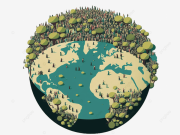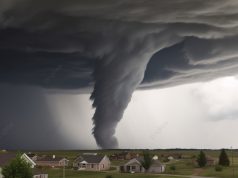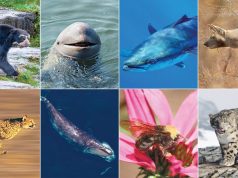Welcome to our blog, where we delve into the important topic of conserving wilderness. Join us as we explore the significance of wilderness areas, their ecological and cultural value, the threats they face, and the strategies and initiatives aimed at preserving these untouched landscapes for future generations.
Understanding Wilderness:
1.1 Definition and Importance:
Defining wilderness as pristine areas that are largely undisturbed by human activity, characterized by their intact ecosystems, biodiversity, and cultural heritage.
Exploring the intrinsic value of wilderness for ecological balance, scientific research, spiritual and recreational experiences, and cultural preservation.
1.2 Types of Wilderness:
Discussing different types of wilderness, such as national parks, protected areas, and designated wilderness areas.
Exploring the various ecosystems found in wilderness, including forests, deserts, mountains, and marine environments.
Ecological and Cultural Value of Wilderness:
2.1 Biodiversity Conservation:
Highlighting the role of wilderness areas in preserving biodiversity and providing habitats for a wide range of species.
Discussing the importance of wilderness as a refuge for endangered and threatened species, and the potential for scientific discoveries and ecological research.
2.2 Ecosystem Services:
Exploring the ecosystem services provided by wilderness areas, including clean air and water, carbon sequestration, and climate regulation.
Discussing the role of intact ecosystems in maintaining ecological processes and supporting human well-being.
2.3 Cultural Heritage and Indigenous Rights:
Addressing the cultural significance of wilderness areas for indigenous communities, who often have ancestral ties and traditional knowledge associated with these landscapes.
Discussing the importance of recognizing and respecting indigenous rights and engaging in meaningful collaboration for wilderness conservation.
Threats to Wilderness:
3.1 Habitat Destruction and Fragmentation:
Exploring the impacts of habitat destruction and fragmentation on wilderness areas, including deforestation, infrastructure development, and urbanization.
Discussing the consequences for wildlife populations, biodiversity loss, and disruption of ecological processes.
3.2 Climate Change:
Addressing the threat of climate change to wilderness areas, including rising temperatures, altered precipitation patterns, and increased frequency of extreme weather events.
Discussing the implications for ecosystems, species distribution, and the loss of unique habitats.
3.3 Overexploitation and Illegal Activities:
Highlighting the risks of overexploitation, such as illegal logging, poaching, and unsustainable resource extraction, in wilderness areas.
Discussing the impacts on wildlife populations, ecosystem health, and the loss of cultural and economic opportunities.
Strategies for Wilderness Conservation:
4.1 Protected Areas and Wilderness Designation:
Exploring the establishment of protected areas and wilderness designations as key strategies for preserving wilderness.
Discussing the role of national parks, nature reserves, and World Heritage sites in safeguarding wilderness areas.
4.2 Habitat Restoration and Connectivity:
Addressing the importance of habitat restoration and connectivity initiatives to enhance the resilience and ecological integrity of wilderness areas.
Discussing techniques such as reforestation, habitat corridors, and reintroduction programs.
4.3 Community Engagement and Sustainable Tourism:
Discussing the significance of engaging local communities in wilderness conservation efforts, including their participation in decision-making processes and benefit-sharing.
Exploring sustainable tourism as a means to generate economic value from wilderness areas while minimizing ecological and cultural impacts.
4.4 International Cooperation and Policy:
Highlighting the need for international cooperation and policy frameworks to address cross-border challenges in wilderness conservation.
Discussing initiatives such as the Convention on Biological Diversity, the Ramsar Convention, and regional cooperation agreements.
Individual Action and Advocacy:
5.1 Raising Awareness and Education:
Emphasizing the importance of raising awareness about wilderness conservation through education, outreach programs, and media campaigns.
Discussing the role of individuals in becoming informed advocates for wilderness protection.
5.2 Sustainable Lifestyle Choices:
Addressing the significance of adopting sustainable lifestyle choices, such as reducing carbon footprint, supporting local and sustainable products, and practicing responsible outdoor recreation.
5.3 Supporting Conservation Organizations:
Highlighting the role of conservation organizations and NGOs in advocating for wilderness conservation, conducting research, and implementing conservation projects.
Discussing ways to support these organizations through donations, volunteering, and advocacy.
Conclusion:
As we conclude our exploration of wilderness conservation, it is clear that protecting and preserving these untouched landscapes is crucial for biodiversity conservation, ecosystem services, and cultural heritage. By understanding the value of wilderness, addressing the threats it faces, and implementing effective conservation strategies, we can ensure the long-term survival of these precious areas for future generations. It is vital for individuals, communities, governments, and international organizations to work together to safeguard wilderness and promote sustainable practices. Join us in future blog posts as we continue to address pressing environmental challenges and advocate for the preservation of our natural world.























